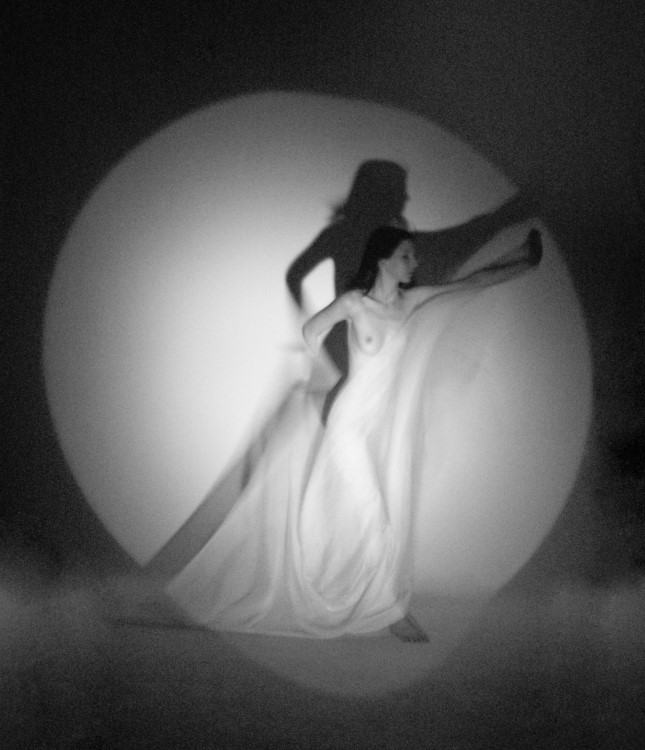the 180mag
editor's blog
"Anyone who listens to an artist needs their eyes examined" -Claus Oldenburg
"Anyone who listens to an artist needs their eyes examined" -Claus Oldenburg
send us an email
You can track this page with firefox add-ons
| current
issue submissions contact archive 180 studio 180 forum |
Cool Links |
my soundtrack: folkradio.co.uk Kim Taylor my workshops: 180 photo workshops my daily photo fix: Flak Photo |
blog
archive
|

or, how I get my models.
I was asked by one of the workshop participants how I find my models. That's not an easy one to answer because I have found models wherever I have met people, but I'll try to give some useful advice here.
My first nudes were done in the mid-'70s and they were of friends and acquaintances at the University I attended. I always had a camera and I was often in the company of naked girlfriends so the two went together quite well.
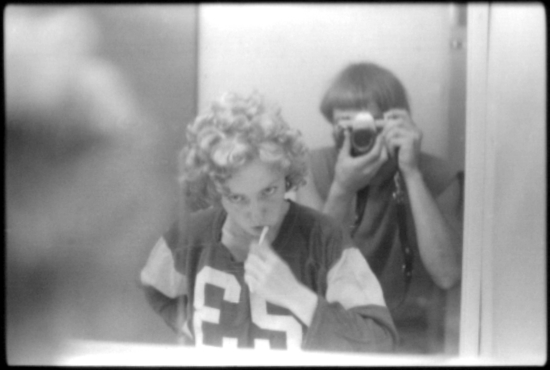
Self Portrait with girl using my toothbrush, 1976
I loaded, developed and printed my own film at the time so nobody had any problem with usage of the shots, it was always just amongst us.
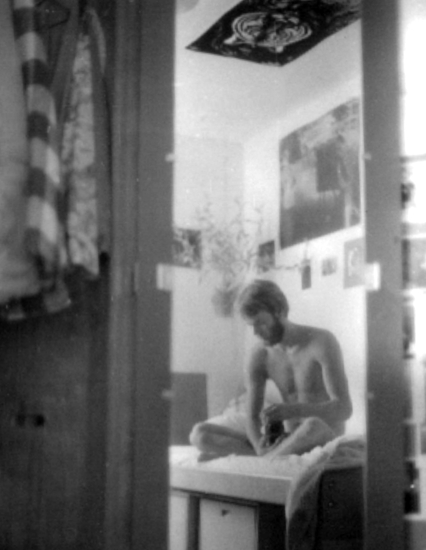
Kim Taylor - self portrait 1976
I shot myself as much as I did other folks and I continue to shoot my shaggy butt once in a while when I haven't got anyone else to work with. In fact, my first job at the University was as a life model for the fine art department so I was learning both sides of the equation, being a model and being a photographer.
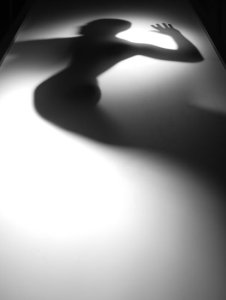
Self Portrait With
(click to see story)
You may want to check out the text in the story above, it contains some comments on self portraits.
Later, once I began to have long term relationships (OK yes I've been married more than once, I'm not that nice a fellow) I had ready models.
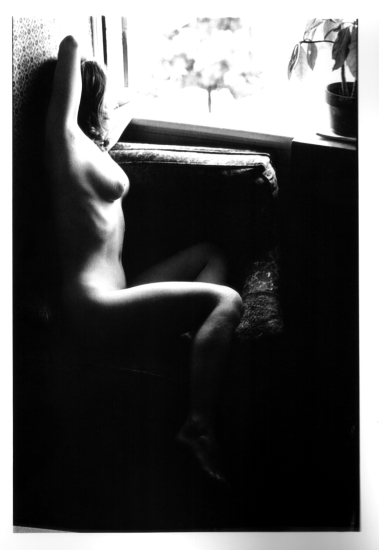
Northumberland Window, early '80s
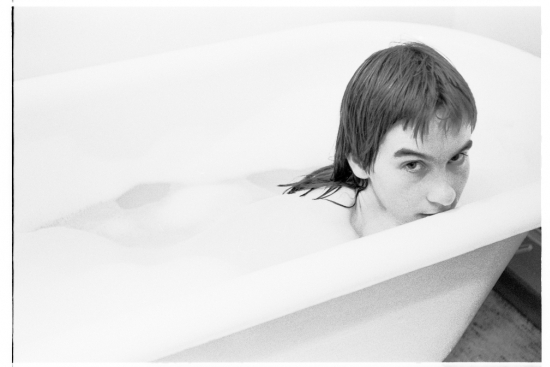
In the bath, early '80s
Not always willing mind you, but ready to hand.
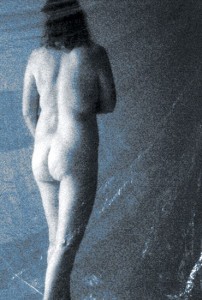
Still
(click to see the story)
So look to your friends and family for your first models. They will get sick of you soon enough but by then you will have some images and more importantly, you'll have some experience with people who are already intimately involved with you so there won't be any confusion about what you're doing. You're working for the images right?
I'll stop with the images since the rest concerns models you can see on my portfolio and in earlier blog entries.
When I returned to photography after a bit of a break while I was waiting for digital to happen I discovered that there was a new thing around, the world wide web, which included model and photographer portfolio sites. I started using these to find models who would shoot with me. Since I had a studio and fancy-looking equipment they usually assumed I was a professional, so I acted like one. A few of the models I worked with were quite good and I worked with them many times, eventually, if the model was willing, we did nudes as well as the other work we were shooting.
Several of the sites allow models to express their willingness to do nude work so that is a good way to contact new models specifically for that work. It also gives you an excuse to be quite plain about what you're doing. "Hi I would like to work with you on some nude photographs". It doesn't need to get any more complicated than that.
I have since drifted away from using those sites because most of the models tend to be quite distant from me and it makes working together repeatedly a bit of a pain.
Did I mention that I like to work with models many times? One of the basic requirements I've found with doing nude work is a trust that only develops when you have worked together more than once.
Now I tend to work, as I did when I started, with friends, acquaintances and, big secret here, people who answer an ad that I have put in a local classifieds website. That ad states very plainly what I'm looking for and directs those interested to my portfolio online.
So, to the big question... How do I talk my models into doing nude work?
I ask them.
You can't dance around, and you can't be nervous about what you're doing. That's why you should always start with friends and family. If you're nervous about doing nude work, you are going to make your models nervous. You need to get used to naked people wandering around the studio and you need to get used to staring at them (while you're shooting that is). Comfort levels are important in any form of people photography and nude work is no exception. If your model isn't comfortable the shots are going to be crap.
Comfort for the model comes from several things:
- You are comfortable doing this sort of work. How do you get comfortable and accumulate that portfolio if you can't work with friends and family? Why not take some workshops. The instructor will have the model and you will have the shots, as well as, hopefully, learning how to behave and maybe even how to take a decent shot along the way.
- You are very clear about what you're doing. Figure out what you're doing and tell your model, either in a meeting or by email or phone.
- You answer all questions promptly and honestly. Make sure you encourage the models to ask whatever questions they may have, and answer them.
- You have a portfolio of work you can point to and say "this is what I do". This answers so many questions it's often all you need.
- You discourage them as much as you encourage them. Make absolutely sure you know that your models are comfortable with you and with nude work, especially if they have not done nudes before. Ask them if they're going to change their mind later, if their parents or significant others are going to object, if they are planning on a career in politics. Say no if they aren't sure, it's not worth the trouble otherwise.
Which is why you ask your questions bluntly and why you never work with a model that isn't sure, that wants to "ease into it" (let someone else have that headache) or is uncertain about what you're doing with the shots.
In other words, you do not, absolutely do not, talk models into nude work. You ask and they tell you yes or no and that's the end of it.
Materials and Content
To make silver prints we put black onto white. What I mean is we started with white and we added black (or other colours) to that base to make the image.
On the other hand a computer monitor starts with black and adds white (or any other colour).
A paper print reflects light, most of it from it's base (the white) while a computer monitor emits light from everything but the black.
Does that make a difference? I'm not sure about the colours but I'm certain that I can't get the same white in my computer monitor that I could with a silver print, and I'm also certain that I can't get the same luminous colours coming out of the blacks with prints that I can from my monitor.
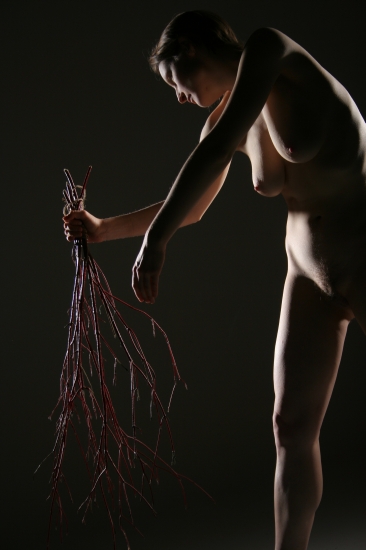
Do I work more with colour and from the blacks now than I did when I was printing? Of course I do more colour, I couldn't afford to print in colour years ago, but I suspect I'd like the monitor's colours better anyway. As for the blacks, I do find myself working on a much darker palette than I did, and I suspect it's because a small amount of light (white or colour) goes a lot further on a monitor than black (and colour) ever did on paper. It's a matter of contrast.
I know the difference in the silver prints wasn't in cost since a sheet of printing paper cost the same no matter how much white or black it contained so there wasn't a bias toward a higher key image. That's not the case now when I think about printing out an inkjet image. Now I not only pay for the paper (much cheaper of course) but the ink. While still cheaper than silver paper and chemicals, ink is expensive and a pain in the butt with the small cartridges that need to be changed regularly in my printer.
I suspect that I am now working at cross purposes to myself. I am seeing in dark backgrounds with smaller amounts of light to make my image (checking the back of my camera and working on the computer) but this very black background makes me reluctant to print because of the amount of black ink I'd be spraying onto the paper.
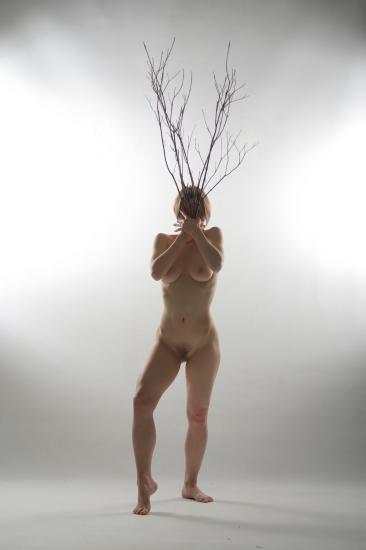
I suppose what that leaves me with is that anything I want to hold in my hand will tend to be high key (nice white paper, less ink on the paper in the inkjet print) and what I make for the monitor or the back of the camera will be biased toward light emerging from blackness.
Something I'd better keep in mind.
 |
Rivet 1200 N. High St. Columbus, Ohio 43201 614-294-TOYS (8697) www.rivetgallery.com |
Rivet, a designer toy and art gallery located in Short North Arts District of Columbus, OH, which opened in the summer of 2007, would like to formally invite you to attend our very first exhibition of photographic works, Darkness Into Light. Focused on underground photography, this group exhibition will feature selected pieces from a handful of internationally renowned photographic artists:
John Santerineross - By constructing his own elaborate sets, working almost entirely without digital effects, capturing complex motion within the frame via voice commands, systems of wires, and pulleys, and limiting his output to just 12 photographs per year, John has produced two acclaimed books hence earned the title as the "definitive example of neo-symbolist photography".
Wayne Martin Belger - Pinhole camera sculptor and photographer Wayne Martin Belger infuses as much spirituality into his pinhole cameras as he does his photographs, using hand-machined metal parts, human skulls, horn, ivory, bones, gears, pulleys, relics, gemstones, precious metals, found objects, and even own blood to construct cameras that act as a sacred bridge between himself and his subject matter. Exhibiting his work with the acclaimed Joel-Peter Witkin and in some of the finest galleries in country, Wayne will visit Columbus Feb 26th - Mar 1st in support of the exhibition as a special endeavor for our local fans (see details below).
Chas Ray Krider - Author of two photography books, "Motel Fetish" and "Do Not Disturb", Chas' considerable skill for capturing the allure of the pin-up has earned both recognition and a strong fans base.
Christine Kessler - Author of the fetish photography book "Pervy Girls" and included in Taschen's recent book "The New Erotic Photography", Christine's work has graced the pages of virtually ever major fetish magazine and mainstream erotic magazine in the US.
Robyn Von Swank - Robyn brings to the exhibition her talent for creating elaborate, over-interesting potrait photography and having just last month wrapped up directing the band Combichrist's latest video, "Sent To Destroy".
and also including:
Silent-View,
Gayla Partridge (666 Photography),
and Jeffery Scott (1019).
In addition to the works of such photographers as Santerineross and Krider, Rivet will present "Yama" by Wayne Martin Belger , the centerpiece of the exhibition. By taking a 500-year-old Tibetan monk skull, encrusting it with gemstones and precious metals, and modifying it to hold two hand-machined pinhole cameras, Wayne has produced in "Yama" a must see piece that blurs the line between form and function. Part Indiana Jones, part Jules Verne, and capable of capturing a 3-dimensional image from "Yama's" pinhole eyes, Wayne uses "Yama" for photographic research into the modern incarnations of historical iconic figures. Exhibited only once at the initial unveiling in La Hoya, CA last spring, Rivet is just the second venue to exhibit "Yama" before its next scheduled showing at a two-person exhibition with Joel-Peter Witkin in the fall.
If all of this excitement wasn't enough, Rivet, with an assist from Columbus College of Art & Design , is bringing Mr. Belger to Columbus for the weekend of Feb 28th to host a lecture at CCAD and attend the final Darkness Into Light private & public receptions (see below for details). For appreciators of the photographic arts and photographic artists themselves, Darkness Into Light presents a unique opportunity to view the combined works of some of photography's leading artists.
Unfortunately, because of the special circumstances surrounding such a high-profile piece art, "Yama" will only available for public viewing Feb 7, Feb 14, Feb 21, and Feb 28, but as a result, Rivet will host both an Opening and Closing public reception for the exhibition. See the below the flyer jump for exact details.
"Yama's" Public Schedule
Public Receptions:
Opening: Saturday, February 7 from 7-10 pm (with Chas Ray Krider present for discussion/signings)
Closing: Saturday, February 28 from 7-10 pm (with Chas Ray Krider & Wayne Martin Belger present for discussion/signings)
Additional Public Viewings:
Saturday, February 14 from 4-7 pm
Saturday, February 21 from 4-7 pm
"Yama's" Extra Special Schedule:
While Rivet is honored to represent such a rare piece of art as "Yama" for our Ohio friends and patrons, in order to relieve the pressure of some of the additional logistical costs a piece like "Yama" brings with it, Rivet is hosting two extra special private fund-raising receptions. These receptions offer a small group of supporters a truly unique opportunity to experience the entire Darkness Into Light exhibition in a relaxed and intimate setting. The details of Rivet's extra special private receptions are as follows:
Private Reception #1:
Friday, February 6th from 7-10 pm, Rivet will host its first private reception. This reception will allow attendees the first viewing of the entire exhibit, the first chance to buy books (signed & unsigned) of the participating artists photography, as well as meet and greet one of the participating artists, Chas Ray Krider. Rivet is also working to secure an open studio tour of Chas Ray Krider's studio (only a few blocks from Rivet) as an additional bonus for the evenings guests. Food will be provided compliments of Barrel 44 Whiskey Bar and drinks will be served compliments of Magic Hat Brewing and Bodega. Limited to 30 attendees, Rivet's goal is to keep the evening a relaxing one for guests, and allowing enjoyment of this amazing exhibition without the pressures of our normal Gallery Hop crowd. To help support the exhibition, Rivet is asking for a donation of $20 for the entire evening.
Private Reception #2:
Friday, February 27th from 7-10 pm, Rivet will host its second private reception. This reception allows attendees the chance to view the entire exhibit, as well as meet and greet two of the participating artists, Chas Ray Krider and Wayne Martin Belger (both artists will be available for signings). In addition, Wayne will bring 3-6 of his additional cameras to this reception. These cameras will only be available for viewing by the evening's guests. Wayne has also offered to take signed and dated Polaroid portraits for our guests as a special memento of the evening. The evening's food will be provided compliments of Surly Girl Saloon and drinks will be served compliments of Magic Hat Brewing and Bodega. Limited to 30 attendees, it's a small and intimate gathering for guests to experience the work and get to know both artists present. To help support the exhibition, Rivet is asking for a donation of $40 for the entire evening.
I hope you find yourself interested in Rivet's upcoming Darkness Into Light exhibit, and if so, I hope you can make it to one or more of our planned events, public or private. If you wish to attend one of the private scheduled receptions please let us know as soon as possible as space is very limited. If you have any additional questions about the exhibit, please forward them to scott 'at' rivetgallery. com, or if you have queries about Rivet in general please forward them to laura 'at' rivetgallery. com. Additional biographical information on the artists can be found on our website.
Thanks for your time and I hope you get to see the show!
-Scott
Several years ago I bought my kids a Vivitar Vivicam50, the cheapest VGA size camera I could find at the time, I think it cost about $80.
It was 640x480 pixels and went to my daughter, then my son, then to the lawn where apparently it resided for a week before being found once more.
At that point it didn't work any more so kicked around the house for a long time until I picked it up to throw it out.
Now I must say that in the deep dark past I made a pretty interesting photograph or three with this camera so I decided to give it one last shot. I downloaded a driver and put in a couple new batteries and lo and behold, I was able to use it again.
I'm so pleased because I had bought a similar type of camera for $5 by ION and it's horrible, the pixel pattern is awful. This Vivicam is quite pleasing and can be up-scaled nicely.
So here's a shot for you to check out, taken today. The interesting colour is, I guess, the camera's attempt to deal with the tungsten modeling lights on the strobes. You can click this one for a full size file to print off if you'd like. Feel free to further edit it and let me know if you use it.
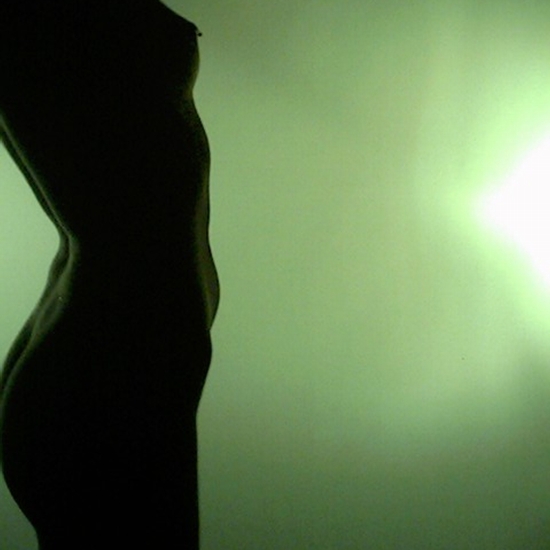
Many of the photos in this blog are labeled "straight from the camera" and I even have a project called "20 straight" which means I find 20 shots in a session that are good "straight from the camera".
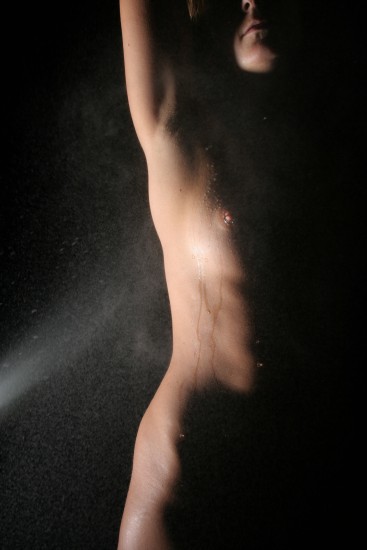
Straight from the camera (resized)
I really don't mean to imply that there is something inherently good about a shot that has no post-processing done on it, any more than I ever meant that the shots I printed in the '70s with the edge of the negative shown all around the image were somehow better than a shot that was cropped. I cropped shots and for those I didn't put in any sort of border as I printed them. I just happened to like printing the edges of the negative, and even the sprocket holes once in a while.
Now it was a "virtue" in the '70s to "crop in camera" to shoot only what you wanted to print, no more and no less. The edges around the shot were proof that you hadn't cropped the image. This never had anything to do with the quality of the image, with the single exception that it was good, when using 35mm negatives, to avoid big crops if you wanted to print anything larger than an 8x10. Somehow, as with all other things photographic, this helpful technical advice became an artistic fad, or perhaps even a fetish.
Cropping in the camera as much as you could was just good technique, it allowed you the most negative to print with. It didn't give you a good image.
Today I see the same sort of technical fetish happening with digital images. One should shoot raw so as to be able to correct colours later, to "get the most from the file", to crop and to work all the other Photoshop magic that you might want to do later.
OK not bad ideas really, but I don't like the basic assumption that you are shooting an image that you haven't made any decisions about. Shooting "so as to have the maximum range of choices about what to do with the shot later" really means you don't know why you're shooting it.
Commit. Make up your mind what image you want, what you want it to look like, and how you're going to use it later and then shoot that. Hell, shoot it in jpeg and crop it in camera and adjust your white balance and even set your saturation and sharpening in the camera, let the engine that's processing the light into data do the stuff you now know you're going to be doing later. Why make extra work? And why make mud.
Because mud is what you get when you try to take images that have the "widest possible potential uses later on". Something that can say anything ends up saying nothing at the end of the day. Commit to your vision, shoot what you mean (in the same way you would say what you mean).
If you intend to print an image at ten by eight feet and do the over-sharpening thing to make it look like the latest advertising fad, you will want to shoot it in raw and process the dickens out of it later, but if you can shot in jpeg and do everything you want "in camera", do it.
That's the "raw is good" idea. Another popular idea is the "megapixels are good" thing. With 10 megapixels (let's say 3648 x 2736 pixels) you can print your point and shoot image at 150dpi out to what? 18 by 24 inches "without upsizing".
Anybody print point and shoot images at 18x24 inches? Not me, I think that anything over 6 megapixel in a point and shoot size sensor is subject to the old law of diminishing returns and ends up looking pretty "processed" to get rid of the digital noise. Big prints just emphasize that problem.
But wait, we shoot at 10 megapixel so we can crop the image and still have enough information to print our 8x10 right? Wrong, a sensor with too many pixels is going to have the same problems cropped as full size. Make that 18x24 print and then use scissors to cut out the 8x10. Still not the quality you want. Buying megapixels so you can stand way back and crop down to what you want is "using the digital zoom", something we would never do as good photographers.
Commit, find a sensor that isn't "over pixelated" and crop in camera. I could go on but you get the idea.
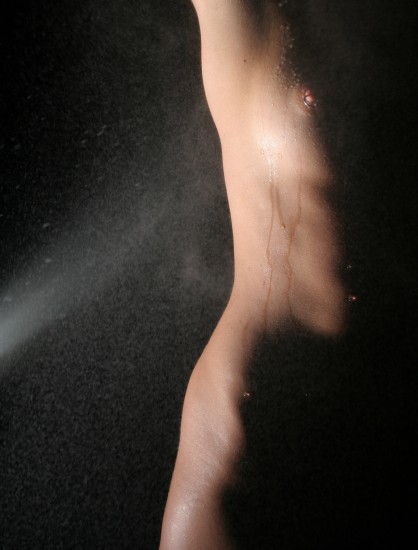
Cropped, but nothing else (resized).
This was cropped from an aps sized sensor which is 8mp so I'm not too worried about over-driving the sensor.
How much time should we spend looking at a photograph?
I have heard that Minor White recommended looking at a photograph for at least 30 minutes. He also used to make his class meditate for quite a while with their eyes closed, before looking at an image.
I'm not sure if we can ask our viewers to meditate before looking, or put a time value on that looking, but it occured to me that it might be reasonable to look at an image for as long as the artist took to create it.
Then I thought about how long it takes me to take a photograph, just a couple of seconds. Well not exactly fair, it can take me several minutes to find the right angle for a landscape, and it can take me the same amount of time to set up and shoot a series of shots of a nude, from which I'll pick one. For instance, this shot was taken at the end of a seven minute series from the time I set up the light and started shooting.
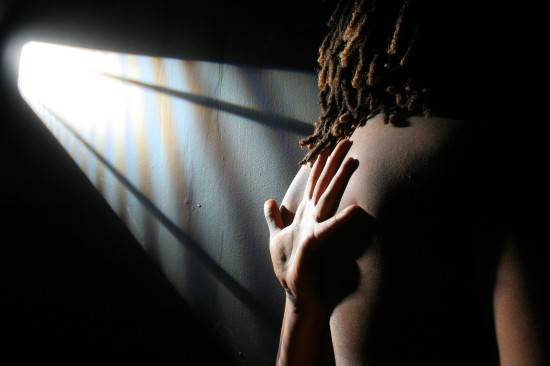
Kim Taylor, straight from the camera.
That's nothing compared to how long a painter will take making their image of course. But I can't see asking the public to spend days or even weeks looking at your more intricate paintings. Unless of course they own them, but we're talking about gallery type viewing here.
Let's think a little deeper about this. How does a landscape painter select a scene to record? By looking and finding, and how long does one look to find a landscape? Probably as long as a photographer takes before he shoots it. So both spend the same amount of time looking and deciding, and then the photographer snaps and the painter... perhaps snaps a shot, or sets up his easel and spends quite a long time looking and painting. Mind you, the painter will spend the same amount of time looking while painting from a photograph too.
The initial sight, the initial choice of scene is what I'm interested in, is what I would suggest is the amount of time we would expect our gallery viewer to look at a typical image. So how long is that? I seem to recall that if you time folks going in and out of a museum or gallery, and divide by number of artworks you come up with something like seconds to minutes.
Sort of the same time as it takes us to select an image for recording.
So that says to me that humans will look at a typical image, while actively "looking at images" for a few seconds to a couple minutes. Of course, that image that grabs our attention, makes us want to look longer, is one we'll spend more time on, and maybe even buy to keep. Certainly one to return to over the years, to look at again in the future.
Sometimes you are working on a project or an image you don't realize you're working on. There is a certain illustration from the age of Art Deco that I love, and that I've always intended to work with, using the nude. It's not so much an illustration as it's a set of lines.
Going through the shoot I did yesterday I just happened to find this shot.
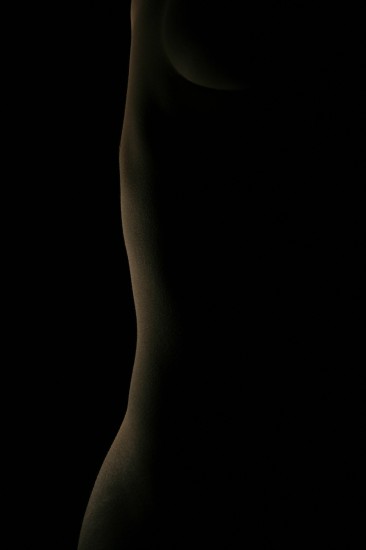
It stopped me in my tracks, the way the light falls around that curve is fascinating, and just what I was looking for.
On a hunch, I converted to greyscale and made it a negative to get this image.
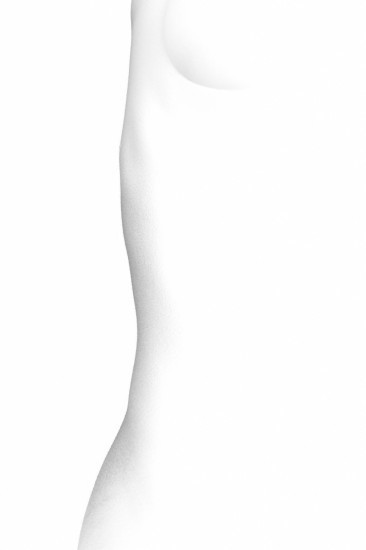
What's not to like? It's almost exactly what I had in mind and I didn't realize I was working on it.
It occured to me today that the bullseye movement in photography, portraits with folks dead centre in the frame, might have a lot to do with the autofocus function of modern cameras. The best and sometimes the only autofocus point in cameras tends to be the one in the centre of the frame, so if you use that to focus and don't think to recompose, you'll get a bullseye shot automatically.
So modern technology may be creating this modern trend.
Well, except that my old manual SLR had its focusing point dead centre, as did my even older rangefinder, and they were just as likely to cause balanced compositions as anything else.
The old solution was to focus and then take your hand away from the focus ring to recompose the shot. The new way is to drop your finger half way, lock the focus, recompose and then push the rest of the way to trigger the shutter.
Not so hard, and not so different so I'll have to look for another explanation for the centre-shots.
When I think about this compositional style these days I think of Rineke Dijkstra http://www.rinekedijkstra.net/ and especially her beach portraits, awkward looking adolescents square in the camera with the sea in the background. Funny, she works with a 4x5 camera so the entire ground glass is her focusing surface. Not centre-spot problem there, just a choice about composition.
A google image search is always fun, let's search Richard Avedon, Diane Arbus, Lisette Model, August Sander... hmm, OK Weegee, Margaret Bourke-White, Dorathea Lang, Walker Evans, Louis Hine and Irving Penn, even Man Ray, some composition that's not bullseye but a lot that is, in fact I'm starting to wonder where the idea came that you shouldn't do a bullseye portrait.
It sure does get a bad rep in courses and workshops where the rule of thirds rules, unless you're really sophisiticated and then it's the golden mean. Actually the newest version of the editing software I use has both a thirds crop assist and a golden mean crop assist. You'll never bullseye anything again.
So maybe bullseye composition is a reaction to photo schools? Or maybe it's just a good choice for some things, like if you're shooting people on a plain background?
Instead of avoiding it, maybe it's time to give it a try.
Sitting in the bar last night having a not-quiet beer (the bartender seemed to figure the radio should be louder than the band tuning up) it occured to me that I don't know why people would buy most of the visual artwork these days.
Or at any time?
Humans started making art, as far as we know, around 30,000 years ago when something in their brains went "ping". That's when cave painting, beads and stone carvings started to show up. Who knows why any of it was made, but let's assume beads were decoration, and bought and sold as such. So we have our first reason to buy artworks, decoration. Now a lot of folks look at these drawings in deep dark caves and figure "secret rites" appeals to gods for good hunting and fertility or some such. Me, I figure it's as likely that deep dark caves are the only place a painting is going to survive for 30,000 years but never mind, there's another reason for making and perhaps hiring done a piece of visual art, to appeal to the gods for something.
Flash forward to 8,000 BC and humans are starting to domesticate animals and grow stuff in Mesopotamia. They're also making clay models of women. In the Jordan valley a bit west of there we have blue-dyed linen decorated with shells. Women and their dresses. The Venus of Wallendorf was made 24-22,000 years ago of course, and while it's tempting to suggest that men will always make artwork of women (or buy beaded dresses for them), it's also suggested that there was a goddess culture going on, so rather than suggest prurient interest and a stone-age porn market, let's stick with art for decoration and for the gods for a little while.
As we hit 5000 BC we invent language and history results. You can't avoid history once you have language, it just happens. Some time before this we invented pottery with, of course, decorative art. One would likely buy plates and the decoration would come along with it, rather than buying art that happens to be on pottery but who knows? After language and cities (3000 BC) came the wheel and bronze and the Great Pyramid of Egypt (2500 BC). Now the pyramids are either the first example of self-aggrandizing art I can think of, or yet more artwork to appease gods... but then again, in the case of the God-Kings it's really the same thing isn't it? So now we've got artists being paid to paint portraits (and create magnificent places to keep them).
From Egypt to Greece and the ideal of beauty, from Greece to Pompeii and those naughty drawings on the walls of folks being all prurient. This time there's little mistake that art is about sex and other fun things. I suspect more than one painter was pornographer in that day.
When the Roman Empire collapsed in the West the Church took over as keeper of the culture. Your local artist would have made outhouse drawings I suppose, but anyone with the urge to get paid would be working for the Church. No naughty stuff there for a few centuries until the Renaissance (around 1300) and even then the themes would remain religious and moralistic, at least in the art that survives because in all this the disposable stuff would still be made for the boys out back. We eventually get to Leonardo (1452-1519) and Michelangelo (1475-1564) and start to understand a lot about the patronage system. Finally we begin to see private commissions from merchants and royalty. A lot of time is still devoted to the devoted but we start to see the odd portrait showing up, the girlfriend, the old man, the kids. So we come to know another way to make some money as a visual artist, the family picture. Was it done earlier? Certainly in Egypt, and likely anyplace any time an artist had enough talent to make a likeness.
By the time we hit the mid 1600's the Dutch have started painting landscapes and middle-class townsmen. Here is money for trees and toilers that will be around for the next couple hundred years. Anyone who wants a decent image to look at will pay a painter for it, or perhaps get an engraved replica from a magazine or print run.
The Stockholm Auction House (auktionsverk) was opened in 1674 and many others soon joined it as places for the public to buy visual art. Here we get the first marketplace for art-as-investment. Somewhere around the same time we also find the first stirrings of the public museum and art gallery which would soon provide anyone with a few pennies, or even for free, the chance to see our visual artwork in some place other than a church.
So for two hundred years we have the image creater's dream world, few images with pools of buyers, the Church, the museum, the commissioning patron, the supporting patron (now usually an arts endowment funded by the government or rich folks) and the general public. If someone wanted to see an image as it was created, one had to go to Church, the Museum or one's pocketbook.
In the mid 1800's all that changed with photography. Now we could see and buy photographs, but we could also see photographs and photographically copied paintings in books. As time went on we could see all this online.
We can see it all, free, online, on backlit monitors of larger-than-books size.
So who buys visual art and why?
The various churches to glorify the various gods.
The public spirited who want to improve the lumpenkind, in other words, the museums.
Folks wanting to decorate the walls over their couches.
Those wanting to remember Grampa, or Grampa wanting the kids to remember him.
Businessmen who are looking for a commodity that isn't stocks and bonds or gold.
Folks wanting to be entertained or pruriently aroused.
Folks who just want to see an amazing image.
So who buys a photograph today?
The church market was never there for photography and is pretty small for painters these days.
Museums don't buy so much as solicit donations from artists these days. They buy stuff that's already in the market, stuff the artist was paid for years ago.
That leaves the stuff that hangs over couches, that is taken at weddings and graduations, that may appreciate in value (usually on the say-so of a gallerist), and porn. All that is still selling well.
What about true "art" those images that are really just amazing, that people want to see? I suppose there are those who still collect this type of image, but most people don't so much desire to collect it as desire to see it, and there's the problem today.
A couple decades ago if I wanted to examine the work of Edward Weston I might buy a couple of his books or if I was lucky, purchase some of his prints. Today I can go to Google and do an image search to look at as much of his work as I could ever want to look at.
I've got no incentive to buy it any more, I've already seen it.
So if I want to sell my images online I should make a gallery of images that people can examine and click on to buy the print? Hell I can't even give them away, once they're online they've already been seen.
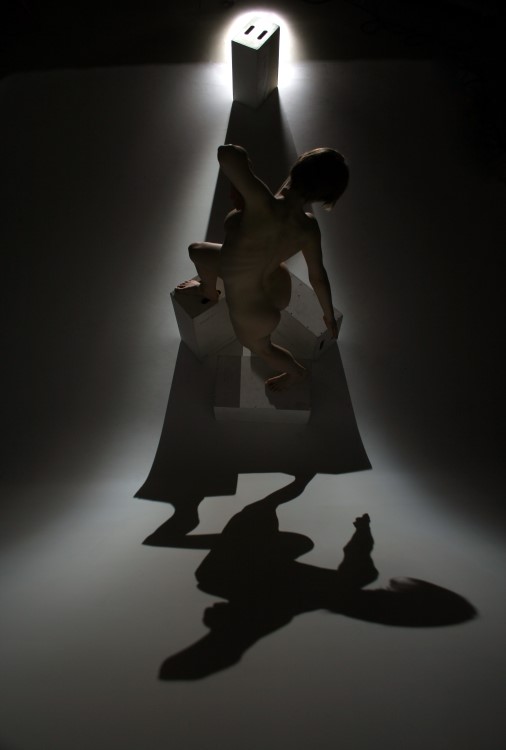
Here's another one for you to see.
Often I'll see statements by beginning photographers that they "shoot everything" that they don't restrict themselves to one style or genre of photography. This I suppose may mean that they think they're so good they can indeed shoot anything but I suspect it is more likely that it means "I can't make a living at any one thing so I'll do whatever comes along".
Well and good but don't tell me that. Websites are cheap, make a website for each area that you "specialize" in and be a specialist there. Nobody hires a wedding photographer because they can shoot product for ebay, and nobody hires a photographer to shoot interiors because they can do a glamour girl lighting setup really well.
Along the way to making these many websites you may discover a few things about your photography, like perhaps you are really bad at car photography or you're really good at shooting food. How you deal with that is up to you of course, but without knowing that in the first place, you can't make decisions on what to do about it.
The bottom line is to be honest with yourself and to consider things from the customer's viewpoint. Are you really capable of shooting everything? More to the point, if you were hiring someone to shoot a poster for your ad campaign would you pick someone who "does everything" or someone who specializes in poster photography?
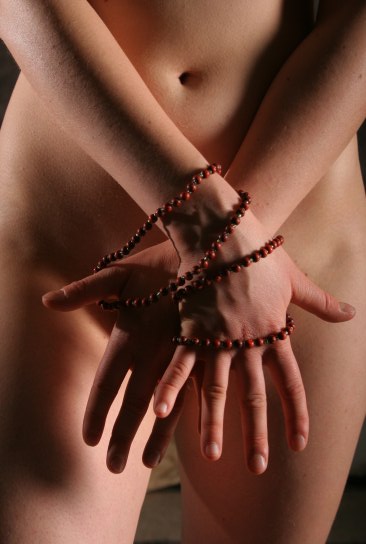
Kim
Taylor's Excellent Jewelry Photography
I shoot anything!
I shoot anything!
For 2009 I thought that I would start making a gift to you readers of a photo from my current 180 stories. These will be in jpg form, 300dpi sized to print on 8.5x11 paper so you can print it on your desktop printer. I've picked a shot you've seen below, I happen to like it a lot. The story is at http://180mag.ca/0901/taylor/taylor.html
Click on the image to bring up the full size file which you can then save and print. If you do download and print it, drop me a line to say hello and tell me how it looks and how you used/displayed it.
Here's the shot:
